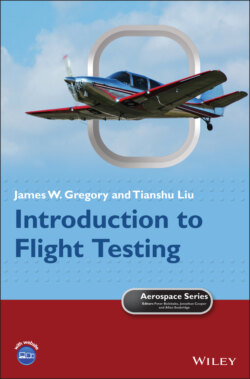Читать книгу Introduction to Flight Testing - James W. Gregory - Страница 20
1.2.2 Experimental Flight Test
ОглавлениеNow, we turn our attention from basic scientific and engineering studies to development and test of new vehicle concepts. NASA Armstrong Flight Research Center (formerly known as NASA Dryden) has led the way over the years with this type of flight research (for a good historical overview of NASA's many flight research programs, see Gorn 2001 or Hallion and Gorn 2003). This type of flight testing is all about pushing the boundaries of what is possible, through development and demonstration of new flight technologies. Beyond the Bell XS‐1 discussed earlier, there are numerous flight research programs that the US Government has conducted (Miller 2001; Jenkins et al. 2003). These cutting‐edge aircraft are generally classified as X‐planes, with the goal of proving out new technologies or advanced concepts (see Figure 1.10). The Bell XS‐1 was the first aircraft in this distinguished lineup, which includes over 60 aircraft (and counting!). Many of these X‐planes led to successful production flight vehicles after a period of focused flight testing (see Miller 2001; Jenkins et al. 2003; Corda 2017).
One interesting example is the X‐wing project, which had the goal of improving the forward flight speed of helicopters. This interesting vehicle, the Sikorsky S‐72 shown in Figure 1.11, is a hybrid between a fixed wing aircraft and a traditional rotorcraft. It could take off vertically like a traditional helicopter, but then its rigid rotors could be stopped mid‐flight as the aircraft transitioned from vertical flight to forward flight. Instead of articulating the rotor blades as a traditional helicopter does, the S‐72 used compressed air blown from the edges of the blades to achieve lift control (called circulation control – see Reader and Wilkerson 1977 for details). This innovative aircraft from the early 1980s has paved the way for high‐speed helicopters today, such as the Sikorsky S‐97 Raider or the Airbus RACER program.
Figure 1.10 Early X‐planes, including the Douglas X‐3 Stiletto (center) and (clockwise, from lower left) Bell X‐1A, Douglas D‐558‐1 Skystreak, Convair XF‐92A, Bell X‐5, Douglas D‐558‐2 Skyrocket, and the Northrop X‐4 Bantam.
Source: NASA.
Figure 1.11 Sikorsky S‐72 X‐wing testbed aircraft.
Source: NASA.
Vehicle flight testing programs are also pushing into the domain of unmanned aircraft systems (UAS), commonly known as drones. For example, The Ohio State University developed and flight tested the Avanti UAS, which is a 70‐lb jet capable of autonomous, unmanned, high‐speed flight (Figure 1.12). This flight vehicle featured dual‐redundant radio control links and a third independent satellite communications link, to provide robust beyond‐line‐of‐sight flight. Flight research with this vehicle assessed the robustness of the control links, along with adaptive control laws for real‐time in‐flight system identification (see Warwick 2017; McCrink and Gregory 2021; or Chapter 16 for details). In the midst of the flight testing program, the Ohio State team set official world records for speed (147 mph) and out‐and‐back distance (28 mi) of an autonomous unmanned aerial vehicle (UAV), as certified by the Fédération Aéronautique Internationale (FAI) and the National Aeronautic Association (NAA).
Figure 1.12 The Ohio State University's Avanti jet unmanned aircraft system.
Source: Photo courtesy of Kamilah King.
